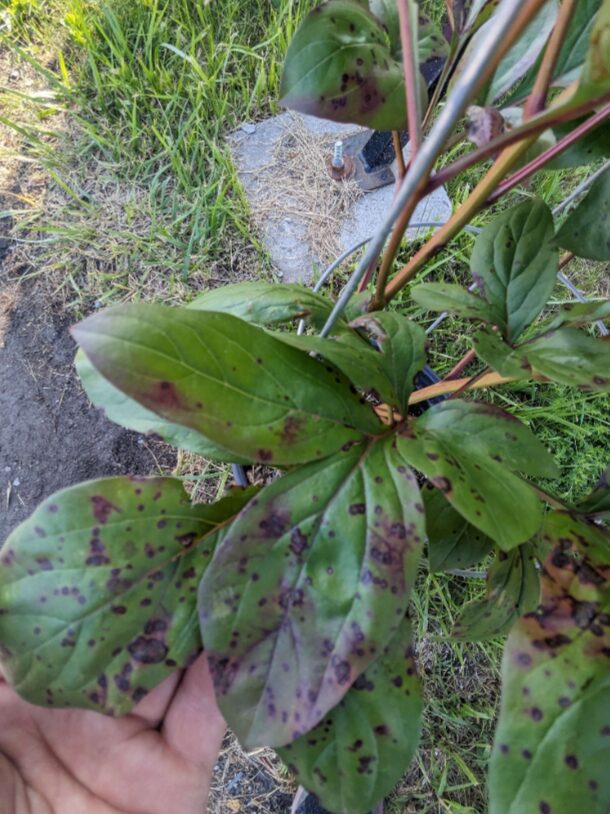Ask Anna – July 2025 Questions
Happy July, everyone! I hope everyone is having a fantastic summer, This month are answering one of your questions:
I planted a beautiful peony this spring and it was doing great, but now I’m seeing purple and black spots all over the leaves. Some of them are curling or browning around the edges. Is it a disease? Will it kill my plant? What should I do to save it? — Julie from Ingleside.
Spring brings with it the joy of planting, and few flowers are as beloved as the peony. With their lush blooms and sweet fragrance, they can be a highlight in any garden. However, if you’ve recently noticed purple and black spots on your peony leaves, you may be wondering what’s going on. Don’t worry—you’re not alone, and there’s a solution!
If the leaves on your peony are developing unsightly spots, curling, or even browning at the edges, this could be a case of “Peony leaf blotch,” often endearingly referred to as “Peony measles.” This condition is caused by a fungus known as Cladosporium paeoniae, which thrives in warm, humid weather and often takes advantage of poor airflow around your plants. While it might look alarming, the good news is that peony leaf blotch typically won’t kill your plant. However, if left untreated, it can weaken your peony over time, leading to reduced flowering and making it more susceptible to other pests and diseases.
Here are some friendly tips to help your peony recover and thrive:
1. Remove Infected Leaves: Start by carefully removing any leaves that show signs of infection. Dispose of them promptly—avoid composting, as this could spread the spores!
2. Improve Air Circulation: Ensure your peony has enough space to breathe. Thinning out the stems and avoiding overcrowding from nearby plants can help air circulate better, making it harder for the fungus to establish itself.
3. Water Wisely: Water your peony in the morning, focusing on the base of the plant. Try to keep water off the leaves since moisture can encourage fungal growth.
4. Preventive Measures: In early spring, before any symptoms appear, consider applying a fungicide specifically designed for peony leaf diseases, especially if this isn’t your first encounter with the blotch.
5. End-of-Season Care: Come fall, cut back your peony and remove all remaining plant debris. This helps prevent the fungus from overwintering and returning next year.
With these simple steps, your peony can bounce back, bringing you those beautiful blooms you love.
Remember, while fungal diseases like this can be a nuisance, dealing with them early on is key to keeping your plant healthy and flourishing for seasons to come. Happy gardening, and may your peonies thrive!
If you have gardening questions or need advice, feel free to reach out! You can send your questions to me at : [email protected] with the subject line “Ask Anna,” and I’ll happily feature your questions in next month’s Seeker.
Stop by Harvest at 2405 Vincent Massey Drive and also at 75 Cornwall Centre Road to pick up your copy of the Seeker each month.





